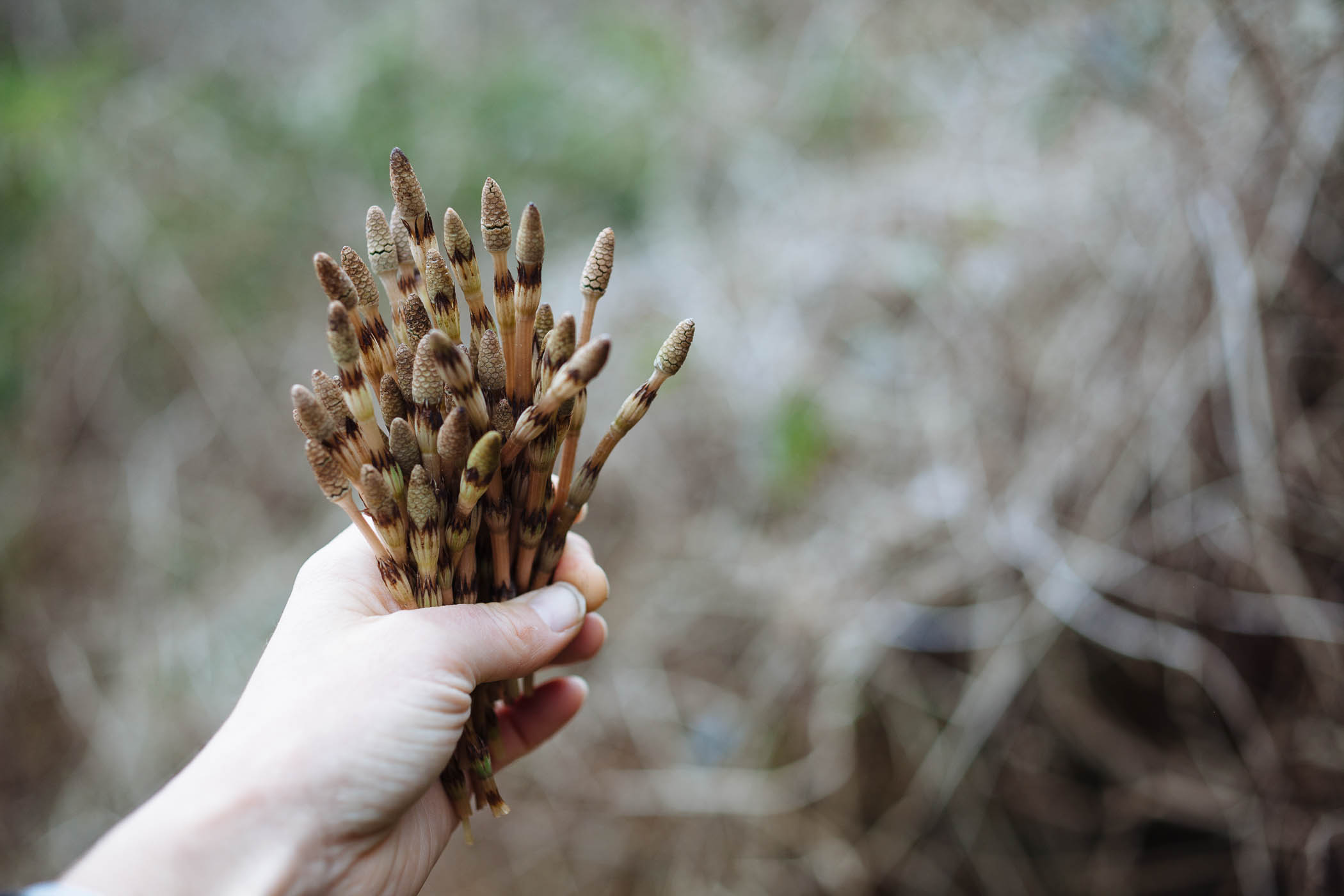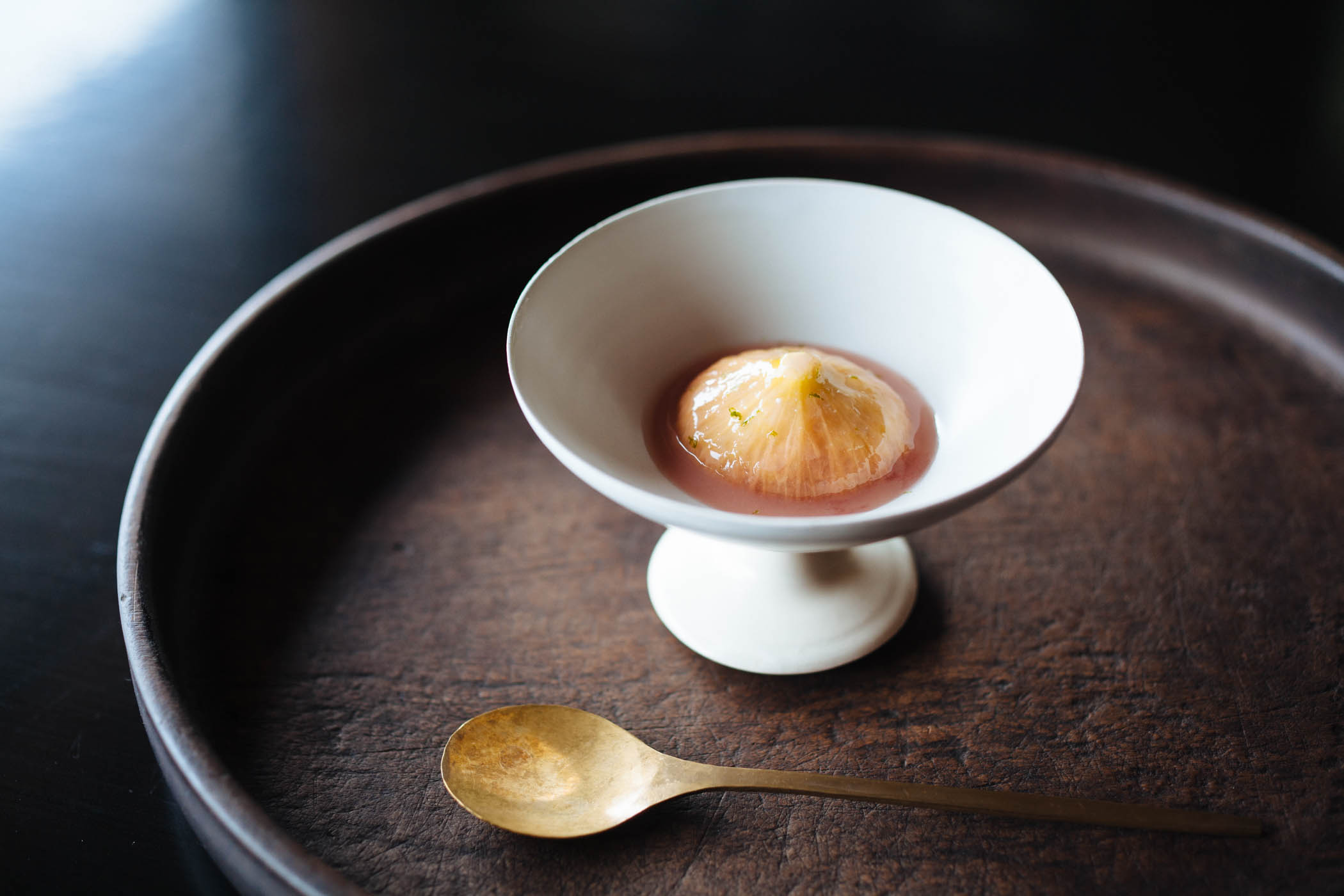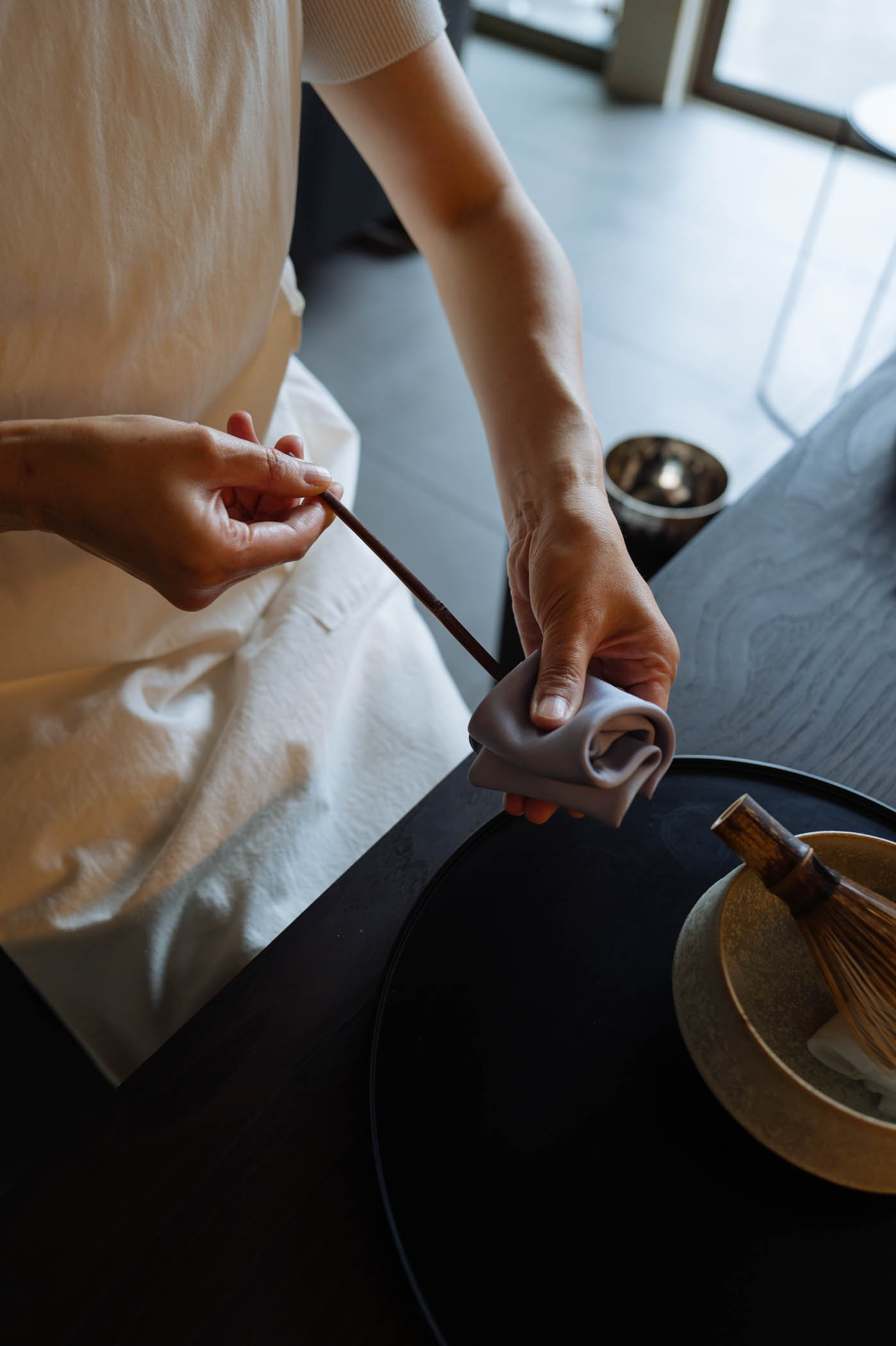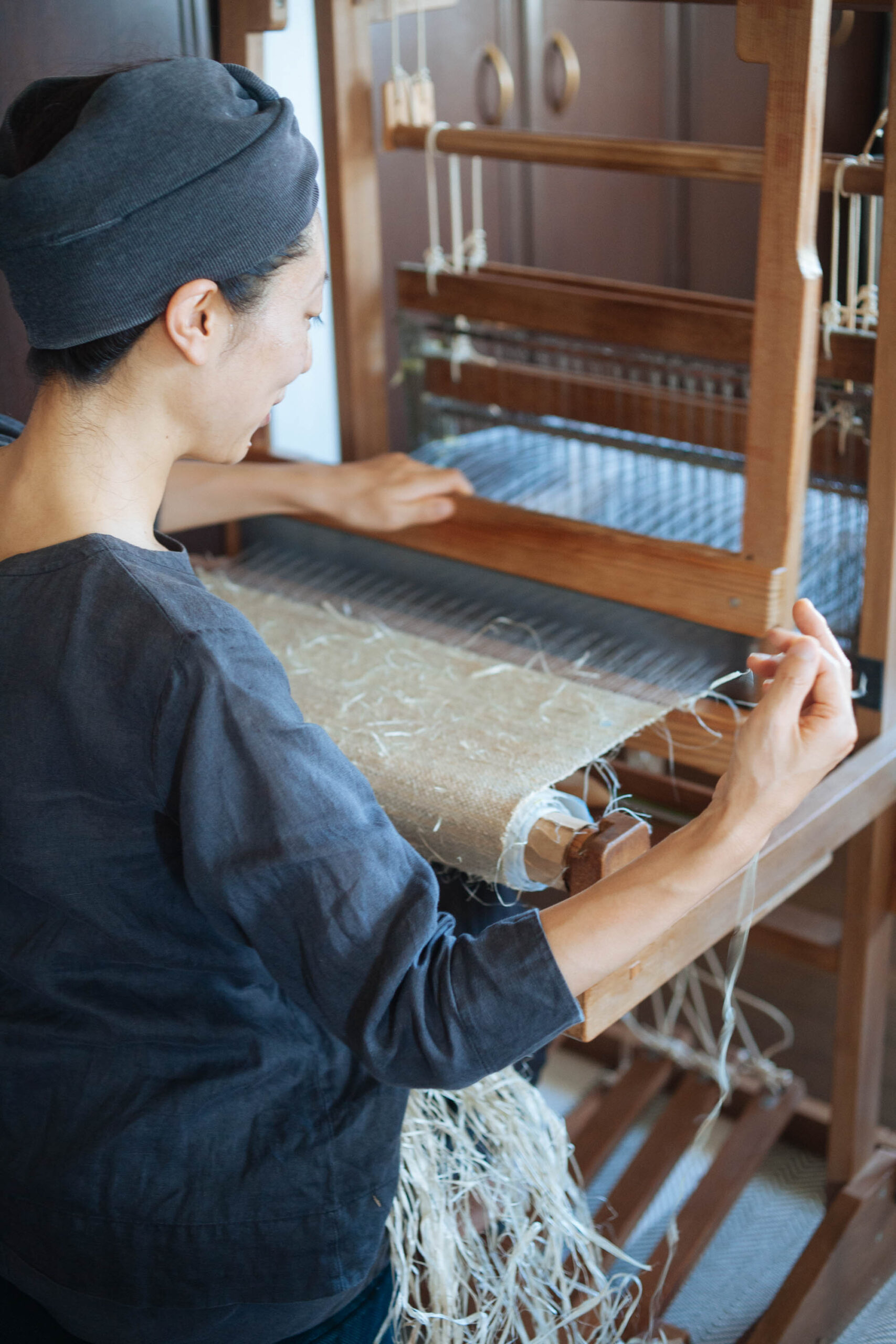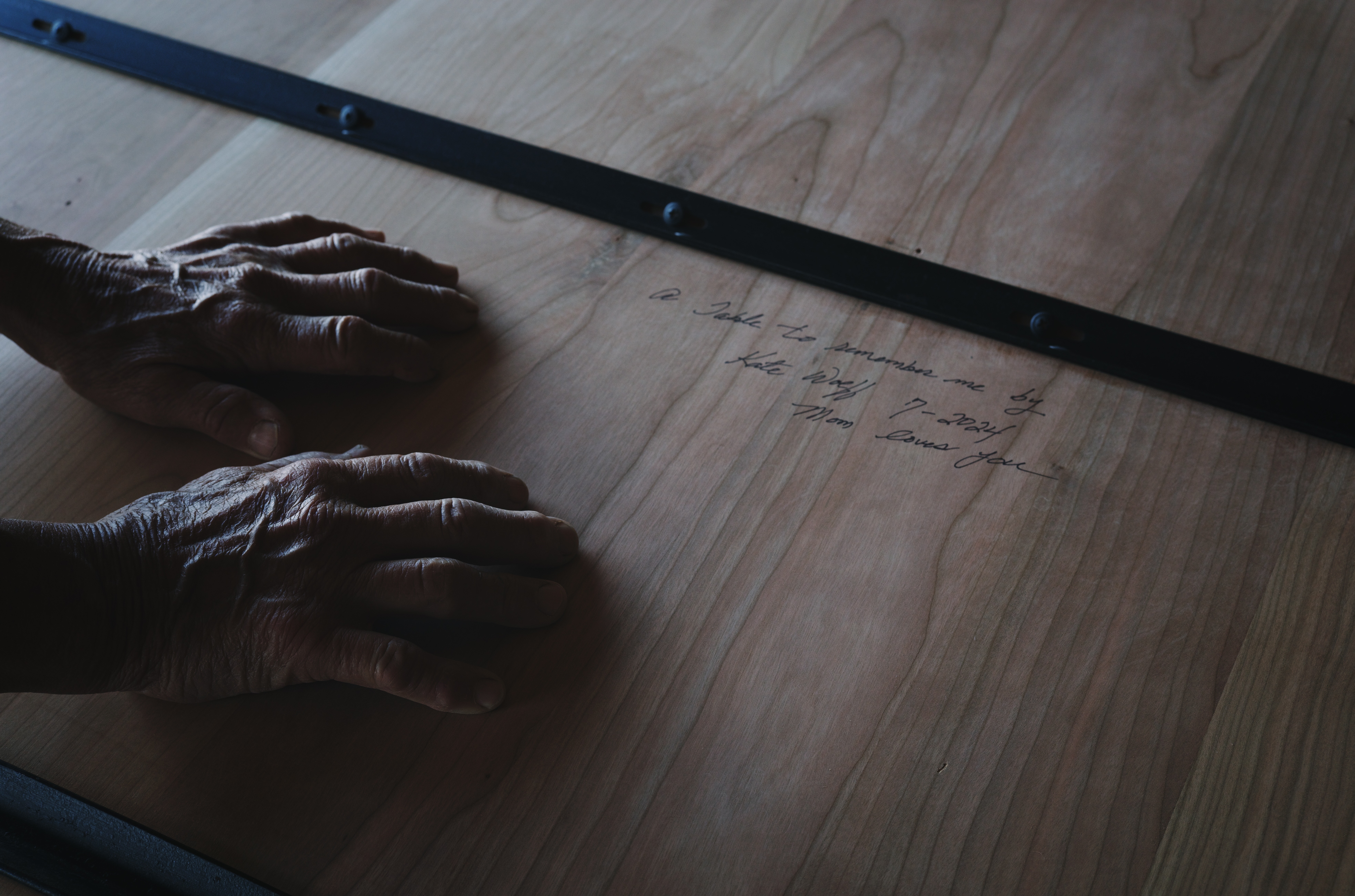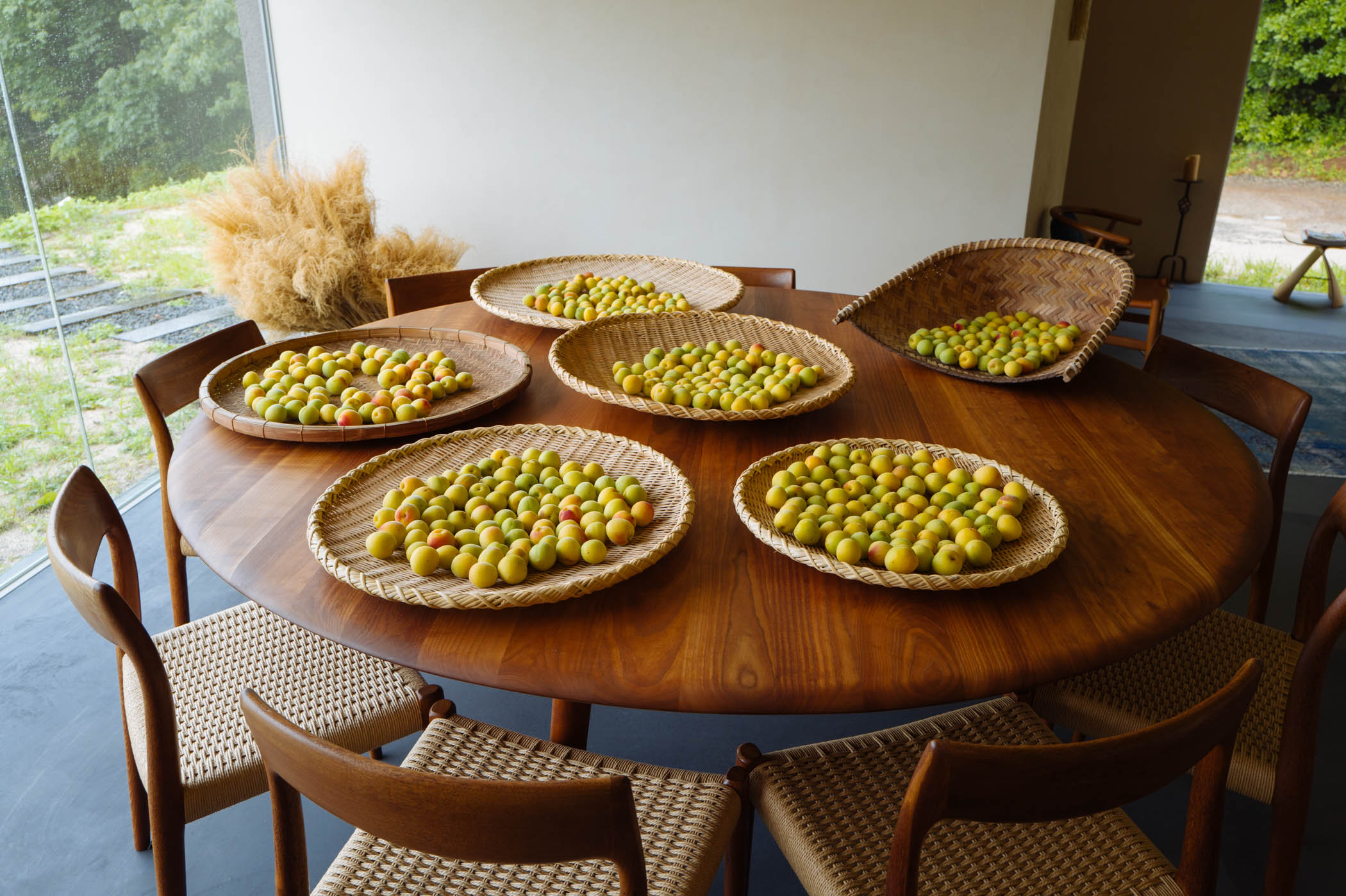Foraging in Japan continues with tsukushi (horsetail)

Foraging in Japan has been a highlight of living here and foraging in Japan. I find it no less exciting for the annual repetition. In fact it’s thrilling, this stretch from February to May, following the micro seasons of sansai, wild mountain edibles, from fukinoto (butterbur buds) to tsukushi (horsetail) to warabi (bracken ferns) to takenoko (bamboo shoots) and on. Foraging brings to mind a hunt, or at least a bit of a search, but I’ve come to know these hillsides well so that these days it’s really more like collecting from a vast and wild garden. We were forced to find a new source of horsetail a few years back when the banks we used to visit were fenced off to keep the wild boar from tearing through the rice paddies and collaterally prevented us from plucking basketfuls of horsetail. But the hills around here are thick with it and just about every year I stumble onto a new patch. I can now tell you where they emerge first, and on what side of what stretch of road you’ll find the plumpest stalks. But then again, foragers don’t divulge their sources…
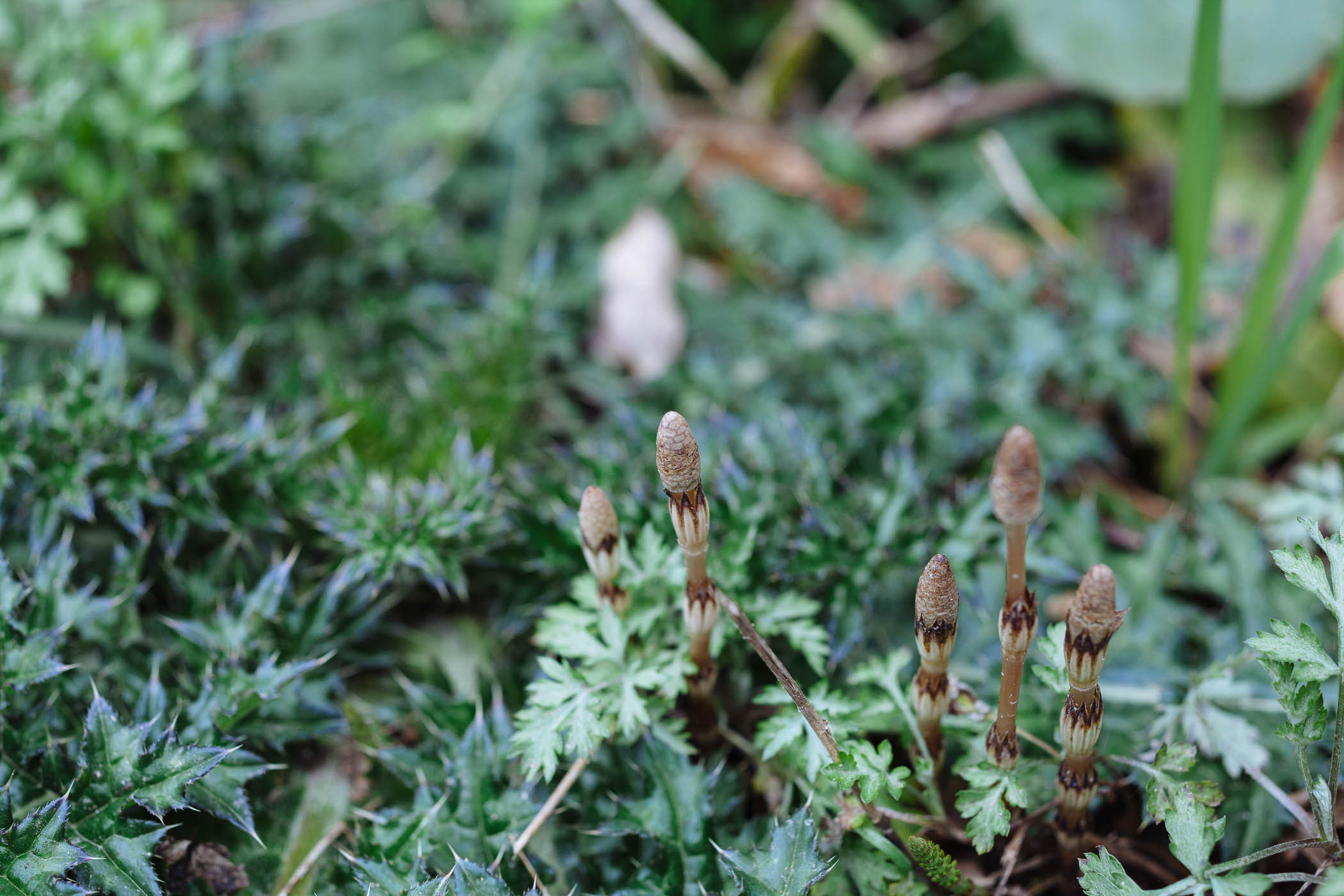
The spore bearing, fertile shoots of field horsetail are living fossils, oddly prehistoric in appearance. The stems are pinkish beige and at each node wear brown paper skirts called hakama, in reference to the traditional garment worn over kimono. Each stalk must be denuded of the several hakama it wears. It’s tedious work and there is no way around it if you want to eat them, so simply surrendering to the task is the path of least resistance. Denuding horsetail renders the same state of mind as painting a wall or leisurely swimming laps, a repetitive act that occupies the body but leaves the mind mostly free to wander.
While denuding horsetail the other day, I found myself meditating on two sensations that I, as a homebody with a serious case of wanderlust, seek with equal desire- thrill and comfort. I’m in constant pursuit of both the new and the familiar and I get a bit restless when one starts to outweigh the other. And so many of the things that bring me the deepest comfort are also thrilling, like foraging wild edibles and harvesting ume from the trees in our backyard orchard or picking vegetables in a garden in Maine that I’ve planted with my own hands. Each season, each cycle, is a satisfying journey from hope, anticipation, and uncertainty into recognition, delight, and reassurance.
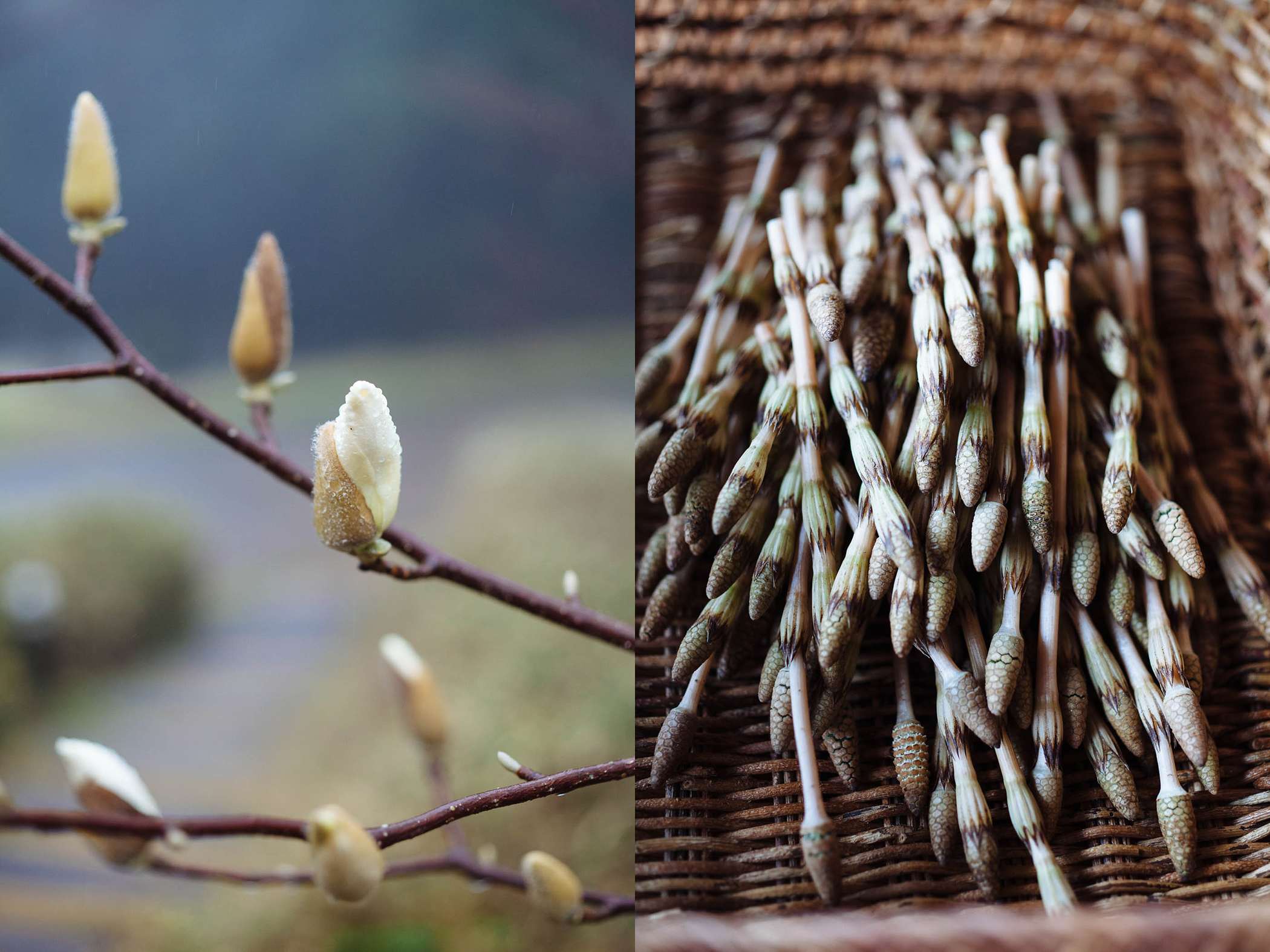
Foragers don’t divulge their secret wild gardens but if you’d like to try foraging in Japan, come visit me and cook with me in my kitchen. We’ll head out and gather handfuls of whatever weeds are in season and turn them into proper delicacies for the table. If still clenched tight, the cone shaped head of horsetail is laden with the greenest of green spores that are pleasantly bitter. We’ll blanch them and fold them into a blanket of a soft egg cooked in light sesame oil and seasoned with a bit of soy and salt. Or we’ll go more traditional and make ohitashi which most clearly showcases their form and flavor.
Ohitashi is a simple arrangement and defines a signature family of dishes within kateryori, Japanese home cooking. The name comes from the verb hitsu, to soak, and so I refer to the dish as soaked vegetables but I’ve also seen it translated as soused vegetables. It’s a rather jolly image, earnest vegetables awash in too much of a good thing. Ohitashi is a sure way to bring fresh seasonal vegetables, wild or cultivated, to the table. The flavor of the vegetables themselves must define the dish so the dressing is light and subtle, a few seasonings added only to enhance and accentuate. The base is dashi and soy. From there one can add accenting flavors such as a dollop if spicy karashi mustard, a splash of rice vinegar, a drizzle of light sesame oil, or mirin for those who like a little sweetness.
If we pay attention, if we gather and cook thoughtfully, and eat in good company, then there is no limit to the thrill and comfort we’ll find at the table.
